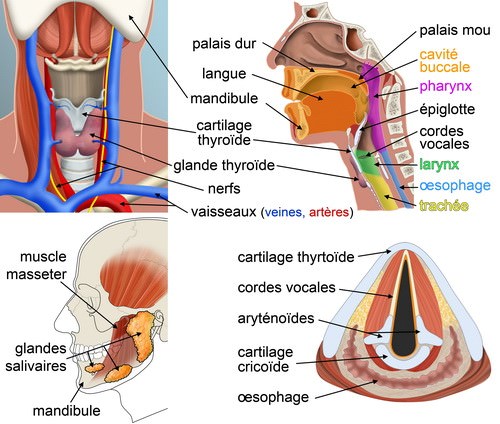Man’s airway begins from the nostrils continuing backwards into the nasopharynx, then through the oropharynx (area at the back of the mouth and the tongue) which in turn leads into the larynx (voice box). The larynx itself is divided into three parts: supra glottis, glottis and sub glottis. From here, the airway leads into the trachea and the bronchi (wind pipes) and then into the lungs. The larynx is really the bifurcation – carrefour of the aero-digestive tract and is most commonly implicated in conditions causing respiratory stridor – that is a harsh musical sound indicating severe obstruction of the airway. The nose up to the vocal cords constitutes the upper airway and the trachea, bronchi with the lungs form the lower airways.
 There are several pathologies – congenital, acquired and tumours that can compromise the airway. Problems in the airway lead to decrease in the levels of blood oxygen and can be life-threatening. The larynx and the lower airway pathologies are important to be mentioned as they pose high mortality rates.
There are several pathologies – congenital, acquired and tumours that can compromise the airway. Problems in the airway lead to decrease in the levels of blood oxygen and can be life-threatening. The larynx and the lower airway pathologies are important to be mentioned as they pose high mortality rates.
Common pediatric and infant laryngeal malformations seen in an ENT set-up are laryngomalacia (a floppy airway), subglottic stenosis (solid cartilage induced blockage), hemangiomas (vascular anomaly), laryngeal pappillomas, laryngotracheal (LT) clefts (when the air pipe communicates directly with the food pipe) and cysts. These pathologies are seen either at birth or within the first two years of life.
With an increasing population and road traffic accidents, modern cities of the world see a large number of patients with neck, head and spinal cord injuries which need immediate tracheotomies (making a hole in the air pipe in front of the neck) or long term endotracheal intubations. Crash on-site intubations are sometimes performed. Patients admitted in intensive care units are frequently intubated either for generalized sepsis or severe heart, renal and other abdominal conditions. All these cause laryngotracheal injuries leading to airway stenoses. Stenoses means narrowing down, and partial or complete closure of the airway, typically at the level of the voice box that leaves the patient handicapped with a tracheostomy. A tracheostomised patient has voice and breathing problems and lives in the danger of asphyxiation and death if the tracheostomy tube gets blocked or misplaced. These patients handicapped with a tracheostomy cause high levels of stress, frustration and psychological plus financial burdens to their family.
For more information, please visit www.chuv.ch/airways
